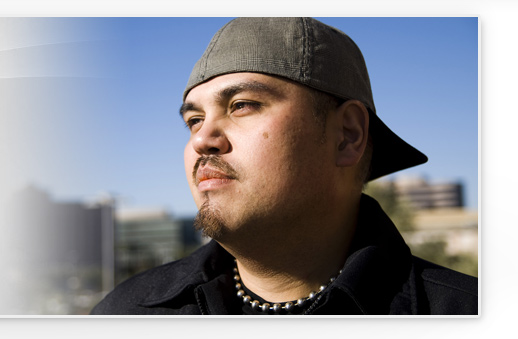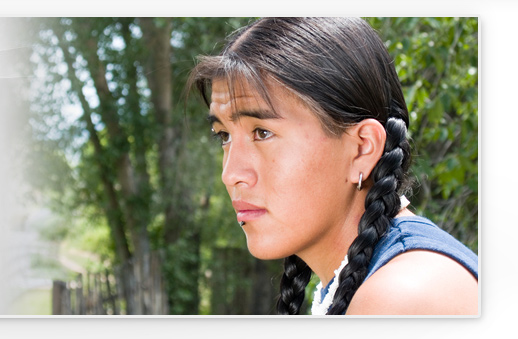
Burnout Prevention: Serving Over a Lifetime
Reaching Teens has materials that can better prepare youth-serving professionals to care for youth over a lifetime. Although an individual can read and watch them independently, the lessons will be best learned in a supportive group that reinforces that we are not alone. The group learning also allows colleagues to apply the lessons to the specific challenges they encounter. Further, nothing replaces mentorship from seasoned colleagues who can facilitate the lessons. Younger colleagues feel grounded when they know that an organization’s mission is to “raise” them in such a way that they learn to care for themselves so that they can better care for others. They gain a sense of security when they learn that the seasoned colleagues they hope to emulate actually continue to struggle with the same challenges they confront, but have found a way to meet those challenges.
Following are suggestions on how to utilize “Reaching Teens” to build an ongoing strategy to prevent burnout.
The following 7 units are presented in an order that hopes to catalyze conversations and build skills that will increase professional longevity. Please adapt a flow that may be more suitable to your setting. Some suggested units include more than one chapter.
Unit 1- Boundaries
This effort should begin by highlighting the importance of appropriate boundaries and bringing to light unintended, inappropriate boundaries (Chapter 20 Boundaries). Appropriate boundaries make youth, particularly those who are marginalized or vulnerable, feel comfortable in our setting. They also protect us emotionally. It is important that we understand that we are caring, even loving, facilitators but that youth remain responsible for their own change. This prevents us from entering a “rescue fantasy” which ultimately disempowers, even degrades, youth and leads to our own sense of failure. Further, we must learn that we can be most supportive when we protectively “hold” others’ pain but do not own it. This chapter also discusses the importance of learning what adolescent issues “push our buttons.” If we do not go through this process we will inadvertently re-experience our insecurities or relive past memories as we serve young people who because of appearance or circumstance trigger our pain. Not only is this unfair to the youth we serve, it unconsciously drains us of energy and leaves us on an unstable footing when we serve youth.
Unit 2 - More on Boundaries: Trauma Informed Care Teaches Us What is About Us and What is Not About Us
Chapter 6 The Impact of Trauma on Development and Well-being and Chapter 22 Trauma-Informed Practice: Working With Youth Who Have Suffered Adverse Childhood (or Adolescent) Experiences prepare us to take a trauma-informed approach with youth. Core to this approach is shifting your lens when confronted with inappropriate or uncomfortable interactions from “what’s wrong with you” to “what happened to you.” (See Bloom, SL and Farragher B (2013). Restoring Sanctuary: A new Operating System for Trauma-Informed Systems of Care. New York: Oxford University Press). Not only does this allow us to maintain empathy it also allows us to know what is about us, and what is not. It is highly protective to our professional longevity when we stop personalizing situations and find ourselves capable of empathy even amidst difficult behavior.
Unit 3- What We Do Matters: Forging Effective Relationships
Chapter 25 Addressing Demoralization: Eliciting and Reflecting Strengths positions us to work with demoralized youth to initiate progress they may have previously considered themselves incapable of achieving. Too many youth absorb others’ low expectations. When we draw out the best in youth and reflect our findings back to them, teens may suddenly become receptive to forward movement. If you ask a young adult who has turned her life around what made a difference, the answer is often: “When Ms. X made me understand I wasn’t trash.” Nothing combats burnout and emotional depletion like witnessing a young person believing in him or herself again merely by having been viewed through a positive lens.
The next suggested chapters build general communication skills. When equipped with these skills our relationships will be more effective, and having trustworthy relationships with youth provides the reinforcement we need to want to serve over the long term. Chapter 14 Setting the Stage for a Trustworthy Relationship suggests approaches to the initial encounter that may help adolescents better understand the potential benefits of our relationships while assuring them of the key points they need to hear to consider us worthy of their trust. However, our words only transmit a small portion of what we communicate. Chapter 15 Body Language helps us to understand how our body language transmits the great majority of our message. Marginalized youth are particularly sensitive to body language before they have absorbed others’ low expectations that are often subtly (or not so subtly) conveyed through body language.
Unit 4 - What We Do Matters: Helping Youth Generate Solutions
This unit includes some strategies that position youth to arrive at their own conclusions after brief adult facilitation. Although behavioral change strategies might not necessarily belong in a module on burnout prevention, they sometimes generate the kind of immediate success that builds one’s professional confidence. Chapter 28 Helping Adolescents Own Their Solutions teaches how to shift our approach from telling adolescents what to do (usually through a lecture) to facilitate them to arrive at their own conclusions. Rather than have solutions imposed on them in a condescending manner that they may not comprehend, we honor their wisdom and draw out their protective instincts. Solutions they have generated will likely have greater staying power. Chapter 29 Gaining a Sense of Control—One Step at a Time introduces a strategy that can shift youth from believing that a problem is insurmountable into creating a plan that moves step-by-step toward their desired goals.
Unit 5 – What We Do Matters: Trusting That We are Planting Seeds
Chapter 69, “Have I Really Made a Difference?: Trusting That Our Presence Matters” discusses a critical point of a comprehensive approach to preventing burnout. When we care deeply, we want to see immediate results but sometimes structural barriers, or a teen’s lack of readiness to make wise decisions, leave us feeling as if we failed. The most seasoned among us sometimes wonder if our efforts made a difference.
After years of practice, we grow to understand that we plant seeds that may not bear fruit until long after our direct contacts. Knowing this can prevent us from feeling as if our actions are futile. People who believe their actions don’t matter find themselves drained and often choose to leave our fields. The professionals in this chapter share their philosophies and own uplifting stories.
Much more important than watching the experts on Reaching Teens is to create the opportunity for the more seasoned colleagues in your group to offer the reassurances that will benefit younger ones.
Unit 6 – Learning Self Care While Paying Attention To Teaching Youth to Care for Themselves
This unit (which might be broken into several lessons) introduces techniques that position us to help youth to manage stress in healthy ways. As youth better manage stress, they may be less likely to turn to risky behaviors and more importantly will grow as human beings. Therefore, the lessons here reinforce previous units that focus on building youth competencies. However, in this context, what may be more important is that all of the strategies also apply to adults and prepare us to manage our own lives in a more healthy and life-affirming manner.
Chapter 27 Health Realization—Accessing a Higher State of Mind No Matter What teaches a model rooted in the belief that all people are inherently healthy and have the ability to self-right if they can learn to refute self-defeating thoughts and behavioral patterns. Chapter 31 Stress Management and Coping offers a comprehensive stress management plan that includes engagement and disengagement, problem focused and emotion focused strategies, and the importance of maintaining a healthy body through restorative exercise, relaxation, nutrition, and sleep. Finally, Chapter 32 Mindfulness Practice for Resilience and Managing Stress and Pain teaches us to live fully in the present by letting go of worries about the past or concerns about the future.
Unit 7 - Prioritizing Self Care – Just Because You Deserve It!!
Chapter 67 Healer, Heal Thyself: Self-care for the Caregiver focuses directly on self-care. Only when we care for ourselves with the same level of commitment that we have to serving others, will we stay well enough to serve over a lifetime. Just as we tell parents that the greatest gift that they can give to their children is to care for themselves, the best guarantee we can offer to young people that they will be okay is that the professionals who care for them will retain their commitment to service over the long term. This chapter proposes self care strategies that will have far more power when reinforced in a group setting. This is a unit that is not fairly addressed as a one-time discussion; it is about holding a discussion in which your group determines that prioritizing your own wellness is an ongoing priority.








